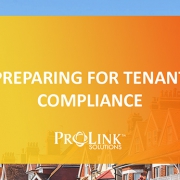Preparing for Tenant Compliance
In the world of affordable housing, ensuring tenant compliance is not just a goal; it’s a necessity. As a software supplier in the affordable housing industry, we understand that tenant compliance is a top priority for our customers. In this article, we’ll delve into the significance of tenant compliance, the challenges affordable housing providers face, and how our software solutions can help you prepare for this critical aspect of property management.
The Importance of Tenant Compliance
Tenant compliance is the cornerstone of successful affordable housing management. Here’s why it’s so important:
- Regulatory Compliance: Affordable housing properties are subject to a complex web of federal, state, and local regulations. Compliance is often a legal requirement and not just a best practice.
- Asset Preservation: Ensuring tenants abide by lease agreements and community rules helps protect your property’s condition and value, enabling you to safeguard your investment.
- Resource Allocation: Compliance ensures that the limited affordable housing resources are allocated fairly and are able to reach those who genuinely need assistance.
- Sustainability: The long-term success of affordable housing programs depends on tenants adhering to compliance standards.
Challenges in Achieving Tenant Compliance
Achieving tenant compliance can be challenging for affordable housing providers due to various factors:
- Complex Regulations: Affordable housing regulations are intricate and can vary by state. Staying updated and compliant is a continuous effort.
- Tenant Turnover: Frequent tenant turnover can make it challenging to maintain consistent compliance across properties.
- Communication Barriers: Some tenants may face language or accessibility barriers, making it difficult for them to understand and comply with regulations.
- Documentation and Reporting: Keeping accurate records and reports can be time-consuming and can also be prone to errors, especially if it’s done in a manner that is manual.
How Our Software Solutions Can Help
We understand the unique challenges our customers face in achieving tenant compliance, and that’s why our software solutions are designed to assist you in preparing for and managing tenant compliance efficiently.
- Compliance Tracking: ProLinkHFA is a suite of tools built specifically for the affordable housing industry, allowing you to address the various parts of affordable housing, from tax credit allocation and tracking tenant compliance to asset management. It’s also designed to handle multiple compliance standards, helping you stay organized and audit-ready.
- Training and Support: We provide comprehensive training and ongoing support to ensure you’re making the most of our software. Stay updated on regulatory changes and industry best practices with our assistance.
- Data Security: We prioritize data security and compliance within our software, ensuring the protection of sensitive tenant information and adherence to privacy regulations.
- Regular Updates: We stay informed about changes in affordable housing regulations and are always making efforts to update our software accordingly.
Conclusion
Preparing for tenant compliance is a vital aspect of affordable housing management, and our software solutions are here to support you every step of the way. We will always aim to empower you to manage compliance efficiently, contribute to the success of your affordable housing initiatives, and ensure the long-term sustainability of your properties.















